Liver function test normal results. Liver Function Tests: Understanding Normal Results and Implications for Alcoholic Hepatitis
What are liver function tests and why are they important. How do liver function tests help diagnose alcoholic hepatitis. What are the normal ranges for liver function tests. What causes abnormal liver function test results. How is alcoholic hepatitis diagnosed and treated. What are the symptoms and causes of alcoholic hepatitis. How can liver health be maintained and protected.
What Are Liver Function Tests and Why Are They Important?
Liver function tests, also known as a liver panel, are a series of blood tests used to assess the health and functionality of the liver. These tests measure various substances in the blood, including proteins, enzymes, and bilirubin, which can provide valuable insights into liver performance and potential issues.
Why are these tests so crucial? The liver plays a vital role in numerous bodily functions, including:
- Metabolism
- Digestion
- Detoxification
- Protein synthesis
- Bile production
- Storage of vitamins and minerals
Given its importance, monitoring liver health through these tests can help detect and diagnose various liver conditions, including hepatitis, cirrhosis, and alcoholic liver disease.
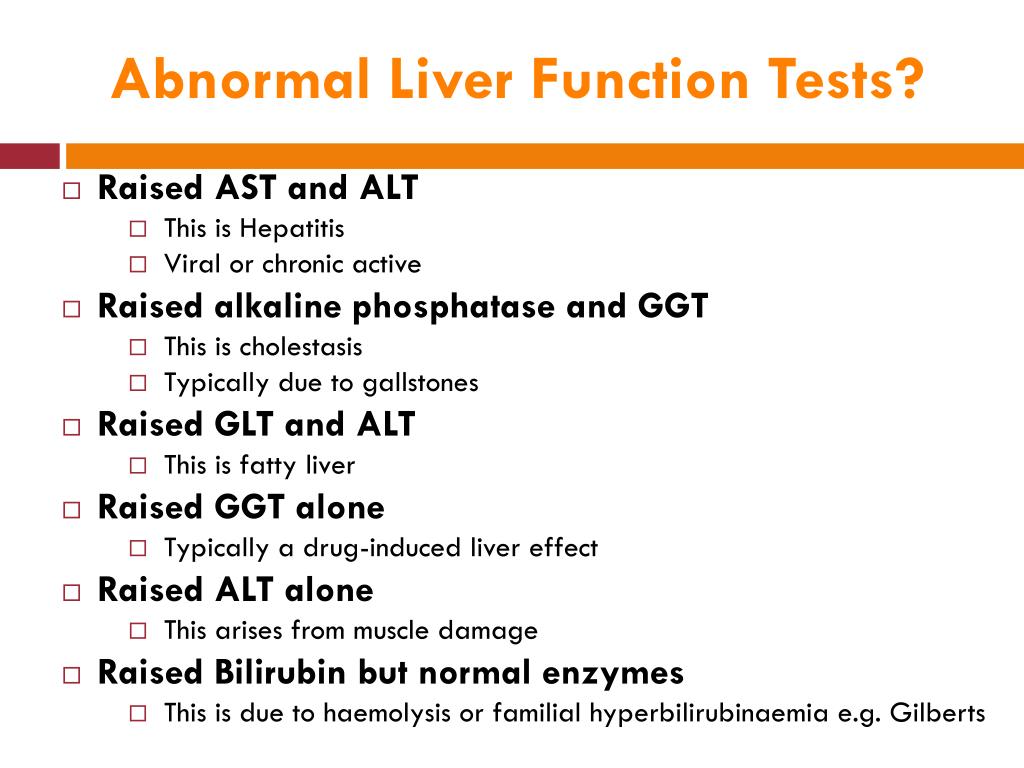
Common Types of Liver Function Tests and Their Normal Ranges
A comprehensive liver panel typically includes several different tests. Here are some of the most common ones and their normal ranges:
Enzyme Tests
- Alkaline Phosphatase (ALP): 30-120 U/L
- Alanine Transaminase (ALT): 10-40 U/L
- Aspartate Aminotransferase (AST): 10-40 U/L
- Gamma-Glutamyl Transferase (GGT): 8-40 U/L (females), 9-50 U/L (males)
Protein Tests
- Albumin: 3.5-5.0 g/dL
- Total Protein: 6.0-8.3 g/dL
Bilirubin Test
- Total Bilirubin: 0.1-1.2 mg/dL
It’s important to note that these ranges can vary slightly depending on the laboratory and the specific testing methods used. Always consult with your healthcare provider for interpretation of your results.
Interpreting Liver Function Test Results: What Do Abnormal Levels Mean?
Abnormal liver function test results can indicate various liver issues. But what exactly do these abnormalities suggest?
Elevated Liver Enzymes
Increased levels of ALT and AST often indicate liver inflammation. This could be caused by:
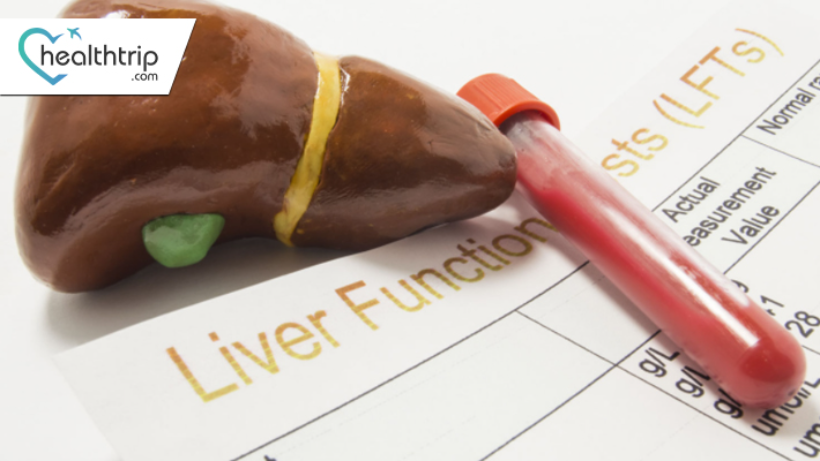
- Alcohol consumption
- Certain medications
- Fatty liver disease
- Recent or current infections (e.g., COVID-19, mononucleosis)
Abnormal ALP Levels
Elevated ALP might suggest:
- Chronic liver disease
- Bone disease
- Chronic kidney disease
Elevated GGT
High GGT levels can be associated with:
- Alcohol use
- Gallstone or gallbladder issues
- Certain medications
It’s crucial to remember that abnormal test results don’t always indicate a severe problem. Factors like age, sex, pregnancy, and certain medications can affect liver function test results. Your healthcare provider will consider your overall health and other factors when interpreting these results.
Alcoholic Hepatitis: Understanding the Connection to Liver Function Tests
Alcoholic hepatitis is a serious condition characterized by liver inflammation due to excessive alcohol consumption. How do liver function tests help in diagnosing this condition?
Key Indicators in Liver Function Tests
In cases of alcoholic hepatitis, liver function tests often show:
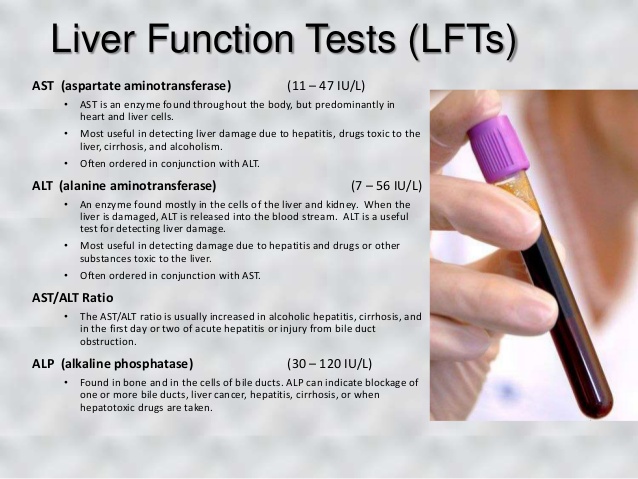
- Elevated AST and ALT levels, with AST typically higher than ALT
- Increased GGT levels
- Elevated bilirubin levels
- Decreased albumin levels
However, it’s important to note that liver function tests alone cannot definitively diagnose alcoholic hepatitis. Other factors, such as drinking history and physical examination, are also considered in the diagnosis.
Symptoms and Causes of Alcoholic Hepatitis: Beyond the Lab Results
While liver function tests provide valuable information, understanding the symptoms and causes of alcoholic hepatitis is crucial for early detection and treatment.
Common Symptoms of Alcoholic Hepatitis
Patients with alcoholic hepatitis may experience:
- Jaundice (yellowing of skin and eyes)
- Abdominal pain and tenderness
- Nausea and vomiting
- Fatigue and weakness
- Loss of appetite
- Fever
- Mental confusion
Causes and Risk Factors
The primary cause of alcoholic hepatitis is excessive alcohol consumption over an extended period. However, several factors can increase the risk:

- Gender (women are more susceptible)
- Obesity
- Genetic factors
- Malnutrition
- Binge drinking
Understanding these symptoms and risk factors can help individuals seek timely medical attention and potentially prevent severe liver damage.
Diagnosis and Treatment of Alcoholic Hepatitis: A Comprehensive Approach
Diagnosing and treating alcoholic hepatitis involves more than just interpreting liver function test results. What does the full diagnostic and treatment process entail?
Diagnostic Process
The diagnosis of alcoholic hepatitis typically involves:
- Medical history review, including alcohol consumption patterns
- Physical examination
- Liver function tests
- Imaging tests (ultrasound, CT scan, or MRI)
- Liver biopsy (in some cases)
Treatment Options
The treatment for alcoholic hepatitis may include:
- Complete abstinence from alcohol
- Nutritional support
- Corticosteroids (in severe cases)
- Management of complications (e.g., ascites, encephalopathy)
- Liver transplantation (in end-stage liver disease)
Early diagnosis and treatment are crucial for improving outcomes in alcoholic hepatitis. If you suspect you might have this condition, it’s essential to seek medical attention promptly.

Maintaining Liver Health: Prevention and Lifestyle Changes
While understanding liver function tests and recognizing signs of liver disease are important, preventing liver damage is even more crucial. What steps can individuals take to maintain optimal liver health?
Alcohol Consumption
Limiting alcohol intake is one of the most effective ways to protect your liver. But what constitutes moderate drinking?
- For men: Up to 2 drinks per day
- For women: Up to 1 drink per day
Remember, these are general guidelines. Some individuals may need to avoid alcohol completely, especially those with existing liver conditions.
Healthy Diet and Exercise
A balanced diet and regular physical activity can significantly impact liver health. Consider:
- Eating a variety of fruits and vegetables
- Choosing whole grains over refined carbohydrates
- Limiting saturated and trans fats
- Maintaining a healthy weight
- Engaging in regular exercise (at least 150 minutes of moderate-intensity activity per week)
Avoid Risky Behaviors
Certain behaviors can increase the risk of liver disease. To protect your liver:

- Practice safe sex to prevent hepatitis B and C
- Don’t share needles or personal care items that might have blood on them
- Be cautious with tattoos and body piercings, ensuring they’re done in sterile environments
Regular Check-ups and Screenings
Regular medical check-ups, including liver function tests when recommended by your healthcare provider, can help detect liver issues early. Who should consider regular liver function tests?
- Individuals with a family history of liver disease
- Those with risk factors like obesity or heavy alcohol use
- People with known liver conditions requiring monitoring
By adopting these lifestyle changes and staying vigilant about your liver health, you can significantly reduce your risk of developing liver diseases, including alcoholic hepatitis.
The Future of Liver Function Testing: Emerging Technologies and Approaches
As medical science advances, new technologies and approaches are emerging in the field of liver function testing. What innovations are on the horizon?

Non-Invasive Imaging Techniques
Advancements in imaging technologies are providing new ways to assess liver health:
- Transient elastography (FibroScan): Measures liver stiffness to assess fibrosis
- Magnetic Resonance Elastography (MRE): Provides detailed images of liver stiffness
- Contrast-enhanced ultrasound: Improves detection of liver lesions
Biomarker Research
Scientists are continually researching new biomarkers that could provide more accurate and specific information about liver health. Some promising areas include:
- MicroRNA profiles
- Metabolomics
- Proteomics
Genetic Testing
Advances in genetic testing are opening new avenues for personalized liver health assessment:
- Identifying genetic predispositions to liver diseases
- Tailoring treatment approaches based on genetic profiles
- Predicting drug responses and potential liver toxicity
These emerging technologies hold the promise of more accurate, less invasive, and more personalized liver function assessments in the future. However, it’s important to note that many of these approaches are still in research stages and may not be widely available in clinical practice yet.

As we look to the future of liver function testing, it’s clear that our understanding of liver health and disease will continue to evolve. These advancements may lead to earlier detection of liver issues, more targeted treatments, and ultimately, better outcomes for patients with liver diseases like alcoholic hepatitis.
In conclusion, liver function tests remain a crucial tool in assessing liver health and diagnosing conditions like alcoholic hepatitis. By understanding these tests, recognizing the symptoms of liver disease, and adopting healthy lifestyle habits, individuals can take proactive steps to protect their liver health. As new technologies emerge, we can look forward to even more precise and personalized approaches to liver health management in the future.
Liver function test: Purpose, types, and results
Liver function tests, commonly known as a liver panel, are blood tests used to measure liver performance through the analysis of various substances found in the blood, such as proteins, enzymes, and bilirubin. The tests can provide important insight into problems with the liver, such as inflammation, scarring, or liver damage. They are often used to diagnose and monitor diseases, including hepatitis and cirrhosis.
There are a variety of different types of liver function tests, and each one screens for different aspects of liver health. Here’s a look at the most common types of liver function tests, as well as their normal ranges and what abnormal results may mean.
What is a liver function test?
A liver function test is a blood test used to measure various substances in the blood that are indicative of hepatic function. In a single appointment, your healthcare provider can gain a better overall picture of your liver health and make diagnoses or recommendations for further testing based on the results.
During the test, a small blood sample is taken from a vein in the arm using a small needle. The sample is then sent to the laboratory for analysis, and the results will be available within several days, or in some cases even sooner. Although your healthcare provider may recommend that you fast for 10 to 12 hours prior to the test, liver function tests generally don’t require any other preparation.
What does a liver function test show?
Your healthcare provider may recommend a liver function test for a variety of reasons. Generally, the test is ordered if you have any symptoms or signs that might indicate a problem with your liver, such as:
- Yellowing of the skin and eyes, a condition known as jaundice
- Upper abdominal pain or swelling
- Nausea or vomiting
- Fatigue
- Loss of appetite
- Dark urine or light-colored stool
In some cases, your healthcare provider may order a liver function test as part of routine screening or to monitor the progression of an existing condition.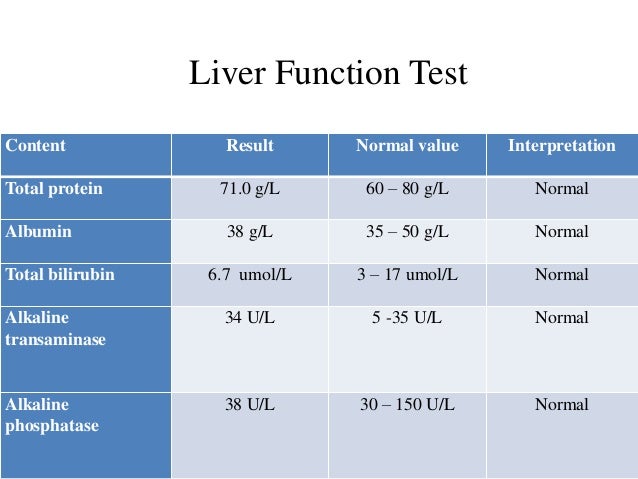
“It’s generally recommended to get a liver panel if you’re diagnosed with obesity or being overweight, are a heavy alcohol drinker, have been exposed to hepatitis viruses, or have a genetic disposition for liver disease,” says Edward Salko, MD, a board-certified physician and a medical director at PersonaLabs.
The test results of a liver panel can also be used to help diagnose a variety of conditions, such as:
- Cirrhosis
- Hepatitis A, B, and C
- Liver cancer
- Nonalcoholic fatty liver disease
- Wilson disease
- Celiac disease
What’s included in a liver panel?
Based on your specific medical history and symptoms, your healthcare provider may order a number of different tests, explains Dr. Salko. Some common tests included in a liver function panel include:
- Alkaline phosphatase (ALP)
- Alanine transaminase (ALT), also known as alanine aminotransferase
- Aspartate aminotransferase (AST), also known as aspartate transaminase
- Gamma-glutamyl transferase (GGT), also known as gamma-glutamyl transpeptidase
- Albumin
- Total protein
- Bilirubin
- Lactate dehydrogenase (LDH)
- Prothrombin time (PT)
Liver function test normal range
The liver plays a role in nearly every bodily process, including metabolism, digestion, and immunity.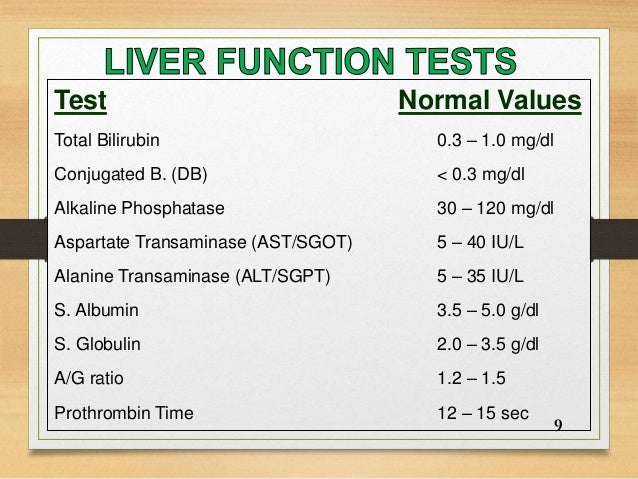 As such, a healthy and properly functioning liver is important for overall health.
As such, a healthy and properly functioning liver is important for overall health.
However, there are several factors that can affect how the liver functions, including age, sex, pregnancy, and certain medications, explains Dr. Salko. “Alcohol use, frequent eating out, and smoking cigarettes can also have adverse effects on the liver,” he adds.
Liver enzyme test
Liver enzyme lab tests measure the levels of certain enzymes in the blood that are released by liver cells. These enzymes help to speed up certain chemical reactions within the body, such as breaking down proteins and fats, helping blood clot, and fighting infection. Most commonly, doctors will order a test for four different enzymes:
- Alkaline phosphatase (ALP): 30–120 U/L
- Alanine transaminase (ALT): 10–40 U/L
- Aspartate aminotransferase (AST): 10–40 U/L
- Gamma-glutamyl transferase (GGT): 8–40 U/L for females, 9–50 U/L for males
“Elevations in both AST and ALT often mean that the liver is inflamed.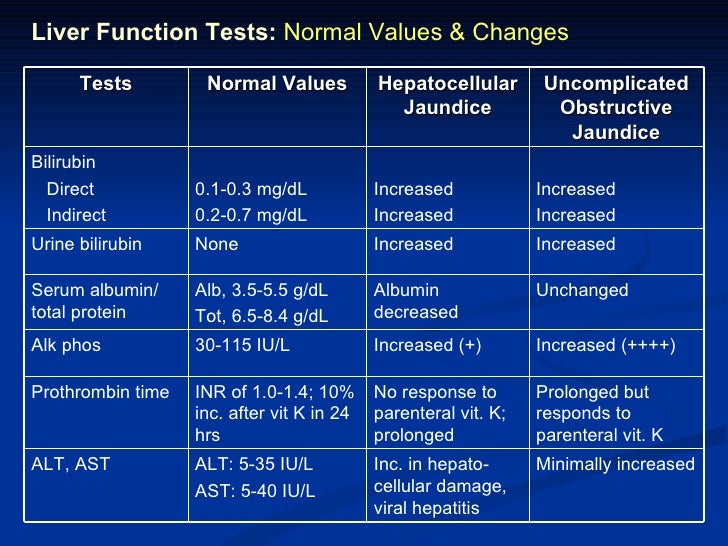 The most common causes would include alcohol use, medications, fatty liver disease, and recent or current infections, such as COVID, mono, or other viruses,” says Max Pitman, MD, a medical director at Salvo Health and board-certified physician at Summit Health in Brooklyn, New York.
The most common causes would include alcohol use, medications, fatty liver disease, and recent or current infections, such as COVID, mono, or other viruses,” says Max Pitman, MD, a medical director at Salvo Health and board-certified physician at Summit Health in Brooklyn, New York.
Abnormal levels of ALP could be an indicator of chronic liver disease, bone disease, or chronic kidney disease. However, additional laboratory tests are often needed to make the diagnosis.
“Elevated GGT can be seen in many conditions such as alcohol use, gallstone or gallbladder issues, and medication use,” Dr. Pitman says. “Elevated GGT on its own is not cause for immediate concern but should be evaluated in the context of other abnormal liver tests. Small increases in liver enzymes (two to five times the upper limit of normal) are often temporary and not cause for excessive concern but should be followed up to make sure that they decrease to the normal level over time.”
Albumin
Albumin is a protein produced in the liver, and it plays an important role in transporting various substances throughout the body, including hormones and medications. An albumin test measures the levels of serum albumin, with a normal range being 3.5–5.5 g/dL.
An albumin test measures the levels of serum albumin, with a normal range being 3.5–5.5 g/dL.
Elevated levels of albumin may be a sign of dehydration, while low levels can be indicative of liver or kidney disease. Dr. Pitman adds that low albumin can also be a sign of malnutrition or chronic inflammation.
Total protein test
The total protein test measures the total amount of proteins in your blood, including albumin and globulins. A normal range is typically 5.5–9.0 g/dL.
“Low total protein is a sign of malnutrition or chronic inflammation,” says Dr. Pitman. “Elevated total protein, particularly if it’s a very high level for a sustained period of time, should be checked out by your primary care physician or hematologist to make sure there is no underlying condition contributing to excess protein in the blood.”
Bilirubin test
Bilirubin is a yellow substance naturally made as your body breaks down old red blood cells. A healthy liver will automatically remove the majority of the bilirubin from your body as a waste product. However, if the liver is not functioning properly, bilirubin will build up in the bloodstream and cause the skin to yellow, a condition known as jaundice.
However, if the liver is not functioning properly, bilirubin will build up in the bloodstream and cause the skin to yellow, a condition known as jaundice.
The normal range of serum bilirubin levels is 0.3–1.0 mg/dL. If your bilirubin levels exceed this range, it may be a sign of a liver condition, but this isn’t always the case—certain medications and foods can also elevate bilirubin levels.
LDH test
LDH, which plays an important role in energy production, is an enzyme present in the cells of almost all organs and tissue. A normal range for LDH levels is 80–225 U/L.
“Many different types of conditions can cause elevated LDH,” Dr. Pitman explains. “It’s not specific to any one condition. Some of these conditions involve inflammation, like infections, or rapid cell turnover, like in malignancy or certain types of anemia. Many other conditions can cause it as well, including autoimmune conditions, drug reactions, and much more.”
Dr. Pitman adds that a high LDH on its own should not cause concern, but it should be evaluated in context with other symptoms and tests.
Prothrombin time (PT) test
Prothrombin time refers to the time it takes for the liquid portion of your blood, also known as plasma, to clot. A normal prothrombin time should be within 11-13 seconds.
“Elevated PT means that blood clotting is not occurring as rapidly as normal and can indicate a risk of excessive bleeding,” Dr. Pitman says. “This is commonly seen in people who are taking blood thinners such as coumadin or Jantoven. It can also occur as a result of low vitamin K levels, certain inherited bleeding conditions, or in advanced liver disease, such as liver cirrhosis or acute liver failure.”
Next steps: What if I’m diagnosed with a liver condition?
Abnormal liver function test results can indicate a variety of liver conditions. While many of the symptoms of liver conditions are similar, the treatment will depend on the specific diagnosis.
It’s important to address any and all concerns you may have with your healthcare provider, as they can provide you with the best information and advice on how to manage your condition, as well as potential side effects of each treatment option. Additionally, Dr. Salko advises that diet and lifestyle changes may help improve overall liver function, as well as have a positive impact on other aspects of your mental and physical health.
Additionally, Dr. Salko advises that diet and lifestyle changes may help improve overall liver function, as well as have a positive impact on other aspects of your mental and physical health.
Liver Function Tests: Purpose, Procedure, and Results
Liver function tests are blood tests that can be used to monitor the health of your liver. Ask the doctor what you need to do to prepare. In some cases you may need to avoid food or certain medications before the test.
Liver function tests, also known as liver chemistries, help determine the health of your liver by measuring the levels of proteins, liver enzymes, and bilirubin in your blood. They can also monitor the progression or treatment of an existing disease.
Depending on the test, either higher- or lower-than-typical levels of these enzymes or proteins can indicate a problem with your liver.
Some of the reasons liver function tests may be performed include screening for diseases such as hepatitis, monitoring the side effects of your medications, and examining the severity of liver disease.
In this article, we take a look at when you might need a liver function test, the different types of tests used, and how to interpret results.
A liver function test is often recommended in the following situations:
- to check for damage from liver infections, such as hepatitis B and hepatitis C, especially if it’s suspected you were exposed to a virus that causes hepatitis
- to monitor the side effects of certain medications because some medications are known to affect the liver, including:
- NSAIDs
- statins
- antibiotics
- antiseizure medications
- tuberculosis drugs
- if you already have liver disease, to monitor the disease and how well a particular treatment is working
- if you’re experiencing the symptoms of a liver disorder or have a family history of a liver disease, such as fatty liver disease
- if you have certain medical conditions, such as:
- high triglycerides
- diabetes
- high blood pressure
- anemia
- if you drink alcohol frequently
- if you have gallbladder disease
Certain tests can reflect different aspects of liver function. For example, elevated alanine transaminase and aspartate transaminase disproportional to bilirubin and alkaline phosphatase levels often indicates liver disease.
For example, elevated alanine transaminase and aspartate transaminase disproportional to bilirubin and alkaline phosphatase levels often indicates liver disease.
Liver function tests are used to measure specific enzymes and proteins in your blood.
Having atypical results on any of these liver tests usually requires a follow-up to determine the cause of the atypical characteristics. Even mildly elevated results can be associated with liver disease.
Common liver function tests include:
Alanine transaminase (ALT) test
Alanine transaminase (ALT) is used by your body to metabolize protein. If the liver is damaged or not functioning properly, ALT can be released into the blood. This causes ALT levels to increase. A higher result than what’s typical on this test can be a sign of liver damage.
It’s estimated that about 10 percent of people in the United States have elevated ALT levels.
Aspartate aminotransferase (AST) test
Aspartate aminotransferase (AST) is an enzyme found in several parts of your body, including your:
- heart
- brain
- pancreas
- liver
- muscles
When the liver is damaged, AST can be released into the bloodstream. A high result on an AST test might indicate a problem with the liver or muscles.
A high result on an AST test might indicate a problem with the liver or muscles.
Since AST levels aren’t as specific of a marker for liver damage as ALT, it’s usually measured together with ALT to check for liver problems. For example, a high AST:ALT ratio may indicate alcoholic liver disease.
Alkaline phosphatase (ALP) test
Alkaline phosphatase (ALP) is an enzyme found in your bones, bile ducts, and liver. An ALP test is typically ordered in combination with several other tests. An ALP test can be used to evaluate the bile duct system of the liver.
Albumin test
Albumin is the main protein made by your liver. It performs many important bodily functions.
For example, albumin nourishes your tissues and transports hormones, vitamins, and other substances throughout your body. An albumin test measures how well your liver is making this particular protein.
Bilirubin test
Bilirubin is a waste product from the breakdown of red blood cells. It’s ordinarily processed by the liver. It passes through the liver before being excreted through your stool.
It’s ordinarily processed by the liver. It passes through the liver before being excreted through your stool.
A damaged liver can’t properly process bilirubin. This leads to an atypically high level of bilirubin in the blood. Certain inherited diseases can raise bilirubin levels, even when liver function works as expected.
The following table shows what liver function tests may indicate in terms of higher or lower results than typical. Following any liver function test, you should have a discussion with your doctor about your test results and what they mean for you.
Problems with the liver can make a person very sick and can even be life threatening. Approximately 4.5 million adults in the United States have chronic liver disease.
Symptoms of a liver disorder include:
- weakness
- fatigue or loss of energy
- weight loss
- jaundice (yellow skin and eyes)
- fluid collection in the abdomen, known as ascites
- discolored bodily discharge (dark urine or light stools)
- nausea
- vomiting
- diarrhea
- abdominal pain
- atypical bruising or bleeding
Your doctor may order a liver function test if you’re experiencing symptoms of a liver disorder.
Liver function tests can also monitor the progression or treatment of a disease and test for the side effects of certain medications.
Your doctor will give you complete instructions on how to prepare for the blood sample portion of the test.
Certain medications and foods may affect levels of these enzymes and proteins in your blood. Your doctor may ask you to avoid some types of medications, or they may ask you to avoid eating anything for a period of time before the test. Be sure to continue drinking water prior to the test.
You may want to wear a shirt with sleeves that can easily be rolled up to make it easier for the medical expert to collect the blood sample.
You may have your blood drawn in a hospital or at a specialized testing facility. To administer the test:
- The healthcare technician will clean your skin before the test to decrease the likelihood that any microorganisms on your skin will cause an infection.
- They’ll likely wrap an elastic strap on your arm.
 This will help your veins become more visible. They’ll then use a needle to draw samples of blood from your arm.
This will help your veins become more visible. They’ll then use a needle to draw samples of blood from your arm. - After the draw, the technician will place some gauze and a bandage over the puncture site. Your blood sample will be sent to a laboratory for testing.
Potential risks of a liver function test
Blood draws are routine procedures and rarely cause any serious side effects. However, the risks of giving a blood sample can include:
- bleeding under the skin, or hematoma
- excessive bleeding
- fainting
- infection
Was this helpful?
After the test, you can usually resume everyday activities. However, if you feel faint or lightheaded during the blood draw, you should rest before you leave the testing facility.
The results of these tests may not tell your doctor exactly which condition you have or the degree of liver damage, but they might help your doctor determine the next steps. Your doctor will call you with the results or discuss them with you at a follow-up appointment.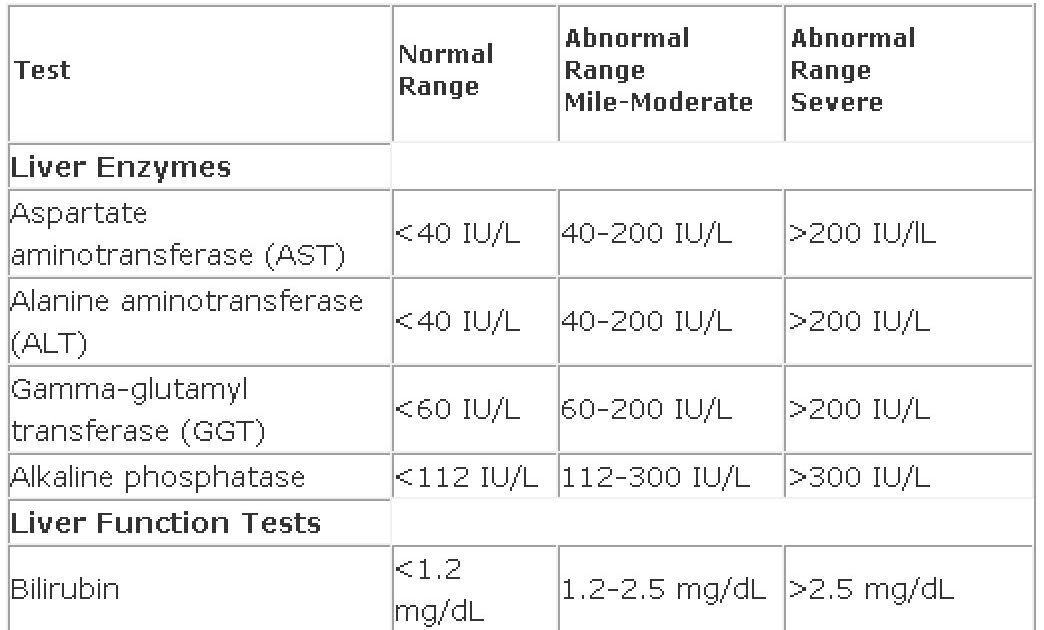
In general, if your results indicate a problem with your liver function, your doctor will review your medications and your past medical history to help determine the cause.
If you drink alcohol frequently, then you’ll need to stop drinking it. If your doctor identifies that a medication is causing the elevated liver enzymes, they’ll advise you to stop the medication.
Other diagnostic tests
Your doctor may decide to test you for hepatitis, other infections, or other diseases that can affect the liver. They may also choose to do imaging tests, like an ultrasound or CT scan.
In addition, they may recommend a liver biopsy to evaluate the liver for fibrosis, fatty liver disease, or other liver conditions.
Liver function tests are blood tests used to help determine the health of your liver. Changes in certain levels of proteins or enzymes can alert doctors of potential problems such as liver cancer, fatty liver disease, or hepatitis.
Liver function tests can also help determine if certain medications are damaging your liver or help you monitor the progression of liver disease.
After you get a liver function test, your doctor can help you interpret the results and discuss what the results mean for you. If they suspect you have liver disease, you may need to undergo other tests such as imaging or a liver biopsy.
Basic liver function tests
Main
liver function tests are performed
to find out the status
hepatic parenchyma. It’s biochemical
research based on the definition
both in the urine and in the blood of various substances.
Research
pigment metabolism.
In 1918 Giemans van
den Berg offered a quality
determination of bilirubin in serum
blood. for the content of bilirubin in
blood serum affect: 1) intensity
hemolysis, since bilirubin is
biotransformation product of hemoglobin,
2) the state of bilirubin excretion
liver function, in fact –
bile-forming function of hepatocytes,
3) the state of the outflow of bile through the bile
tract, or biliary function
liver.
When added to
Ehrlich’s diazo reagent in blood serum
bilirubin gives a color reaction either
immediately (direct reaction), or after
adding spire (indirect reaction).
According to the color intensity of the solution
carried out not only qualitative, but
and quantification of bilirubin
and his factions. enters into a direct reaction
glucuronide bilirubin, or bilirubin,
associated in the hepatocyte with glucuronic acid
acid. enters into an indirect reaction
bilirubin not bound, not passed into
hepatocyte conjugation process.
General level
bilirubin in a healthy person
blood serum is 8.5 – 20.5
µmol/l; bound bilirubin (in direct
reactions) – 0 – 5.1 µmol/l; unrelated
bilirubin (in an indirect reaction) – up to
16.6 µmol/l. In a healthy person
ratio of bound to unbound
bilirubin averages 1:3.
For hemolysis ,
when hepatocytes simply do not have time
conjugate bilirubin, in the blood, by
data of the indirect reaction, increases
content of unbound bilirubin.
With mechanical
jaundice when the outflow of bile is disturbed
from hepatocytes, in the blood, according to direct
reactions, the content increases
conjugated (bound in the hepatocyte
with glucuronic acid) bilirubin.
With many
liver diseases when they are violated
with binding bilirubin, and excretory
functions of the hepatocyte, in the blood increases
the amount of both fractions of bilirubin.
Bound bilirubin
excreted in the bile into the intestines and
is transformed into stercobilin.
Stercobilin is absorbed into the blood and
portal vein enters the liver, where
and is delayed. For liver dysfunction
urobilin is not retained in the liver, but
enters the bloodstream and is excreted in the urine
called urobilin. Hence,
subtle functional state
hepatocytes can also be assessed by the level
urobilin in urine.
Definition
detoxification (neutralizing)
liver function. This function of the liver
This function of the liver
usually assessed with a sample
Quick on the synthesis of hippuric acid. At
This sample is administered intravenously to the patient
sodium benzoate, from which
hippuric acid is synthesized in the liver
and then its quantity is determined in
urine. When hepatocytes are damaged, the synthesis
hippuric acid is reduced to 20 – 10%
from due.
Condition assessment
carbohydrate metabolism in the liver. The states of carbohydrate metabolism determine
according to the level of glucose and sialic acids in
blood serum. In a healthy person
glucose level in whole capillary
blood is 3.88 – 5.55 mmol / l, or in
blood plasma – 4.22 – 6.11 mmol / l .. Level
sialic acids in blood serum
a healthy person is 2 – 2.33
mmol/l. When hepatocytes are damaged
the level of sialic acids is noticeable
increases, and when injected into the blood
sick glucose solution, its level
returns to normal slowly.
Condition assessment
protein metabolism.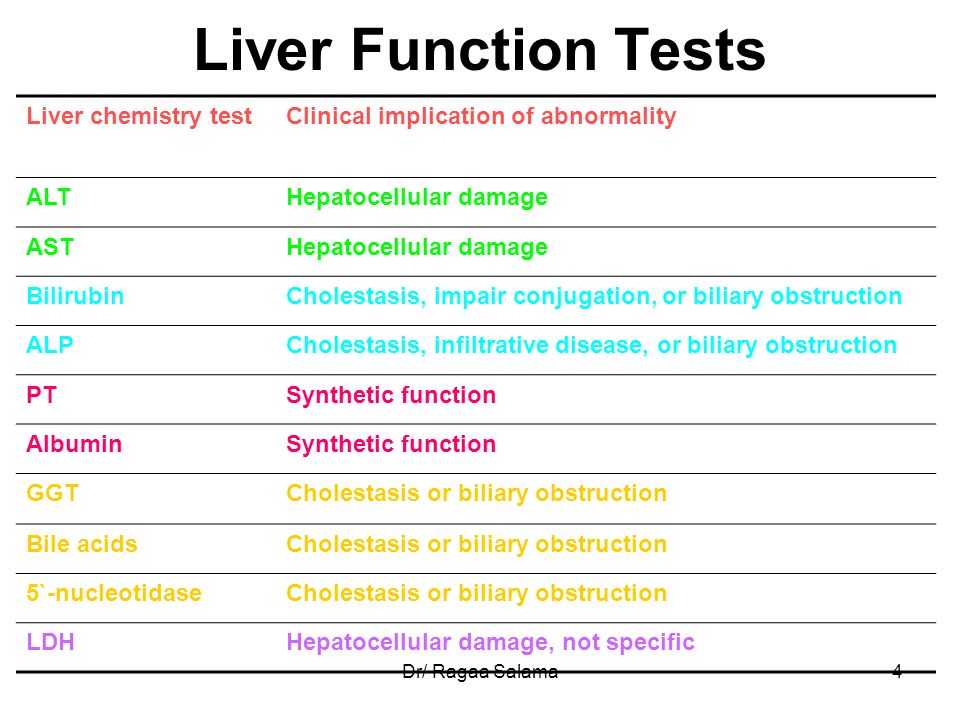 Since the liver
Since the liver
performs a protein-synthetic function,
then about the functional state of hepatocytes
judges by the amount of total protein and its
fractions in serum. Healthy
human serum protein level
blood is 70 – 90 g / l. With electrophoresis
albumins on cellulose acetate film
make up 56.5 – 66.5%, and globulins – 33.5 –
43.5%. Globulin fractions: α 1 -globulins
– 2.5 – 5%, α 2 – globulins – 5.1 – 9.2%, β-
globulins – 8.1 – 12.2%, γ-globulins – 12.8 –
19%.
Hypoproteinemia
observed in portal cirrhosis
liver, and hyperprotinemia – with
postnecrotic cirrhosis of the liver.
To characterize
state of the protein function of the liver
use the so-called. sediment samples .
Carry out sublimate and thymol samples.
Sublimate based
the sample lies the precipitation of serum proteins
blood with a solution of sublimate. Received
data are evaluated in ml of sublimate solution,
required to cloud the solution.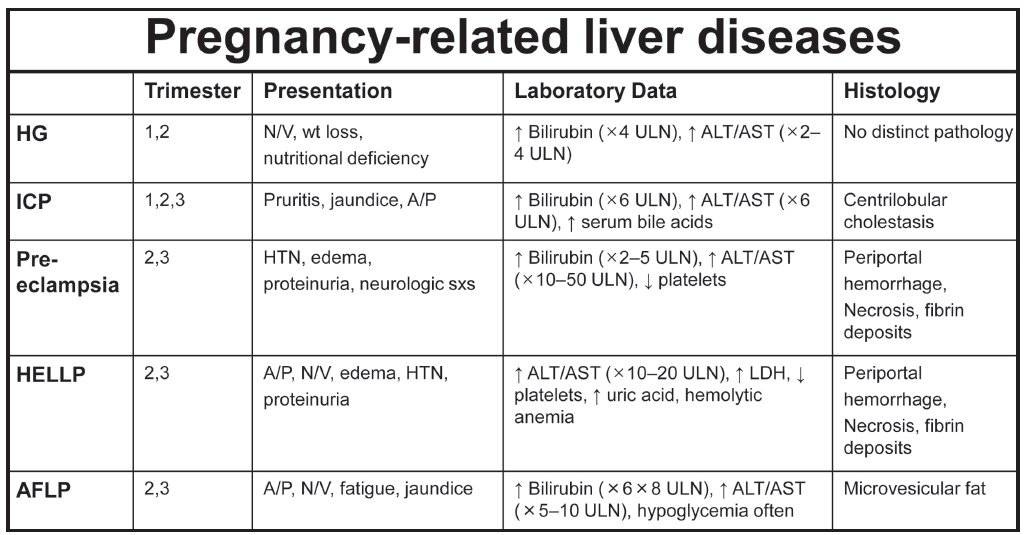
Normal sample sizes are:
1.6 – 2.2 ml.
Thymol test
based on serum turbidity
electrophotometrically.
Its results are evaluated in units
light absorption and are normal
0 – 5 units
Sedimentary results
samples increase in liver cirrhosis
and hepatitis.
Condition assessment
lipid metabolism . Because the liver
plays an important role in the exchange and synthesis
lipids, with its diseases determine
serum level of total lipids
(normal – 4-8 g / l), total cholesterol
(less than 5.2 mmol / l), as well as the levels of fractions
cholesterol, lipoproteins, triglycerides,
fatty acids, calculate the coefficient
atherogenicity.
Activity score
hepatic enzymes. Known
that hepatocytes contain a number
organ-specific enzymes: ALT,
aldolase, alkaline phosphatase,
lactate dehydrogenase.
Normal activity
ALT, determined by the Reitman method –
Frenkel, is 0. 1 – 0.68 µmol / h / l.
1 – 0.68 µmol / h / l.
Serum aldolase activity
is 6-8 ml. Activity
lactate dehydrogenase in blood serum
normally up to 460 IU. Increase
the activity of these enzymes increases
with damage or decay of the hepatocyte,
increase the permeability of its membrane.
In a healthy man
alkaline phosphatase activity is
0.9 – 2.3 mkat/l, au of a healthy woman – 0.7 –
6.3 microkat/l. Increasing enzyme activity
occurs with obstructive jaundice,
biliary cirrhosis of the liver.
Definition
indicators of water-salt and mineral
exchange . To evaluate dysfunction
hepatocyte usually determine the levels
sodium, potassium, calcium, iron and copper
blood serum. Serum level
iron when determined by the FereneS method in women is 9- 29 µmol / l, in men – 10 – 30 µmol / l. At
patients with acute hepatitis and active
cirrhosis of the liver, there is a decrease
serum iron levels during growth
serum copper levels.
Liver Function Test Denver | Castle Rock, CO
Change Website Language
SOUTH DENVER GASTROENTEROLOGY PC
Home – Conditions and Procedures – Liver Diseases – Elevated Liver Function Tests
What are liver function tests?
Liver function tests are blood tests done to diagnose and/or monitor liver disease or liver damage by measuring enzyme and protein levels.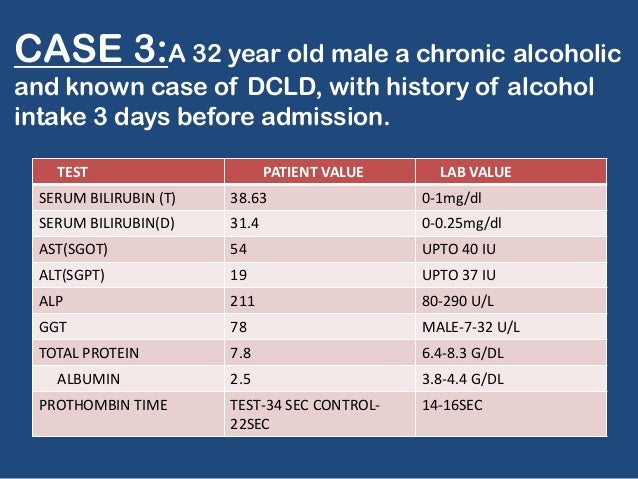 While some tests look for enzymes that only appear in the blood when there is liver disease, others are done to make sure the liver is working properly.
While some tests look for enzymes that only appear in the blood when there is liver disease, others are done to make sure the liver is working properly.
Your doctor may order a liver test if you are more likely to develop liver damage or disease due to:
- Heavy alcohol use
- Family history of liver disease
- obesity
- Use of certain drugs
- Gallbladder disease or anemia
Types liver function tests
There are many liver function tests that can be performed, some some of the most common include:
Alanine transaminase (ALT)
ALT is an enzyme found primarily in the liver that helps break down proteins. A high ALT level may indicate liver damage.
Aspartate transaminase (AST)
AST is a liver enzyme. High levels can be a sign of liver damage or disease.
Alkaline phosphatase (AP)
AP is an enzyme localized in the liver, bile ducts and bones. High levels may indicate liver damage or disease, bile duct blockage, or bone disease.
High levels may indicate liver damage or disease, bile duct blockage, or bone disease.
Albumin and total protein test
Albumin and globulin are the two main proteins produced by the liver. Low levels of these proteins can be a sign of damage or disease.
Bilirubin test
Bilirubin is produced when the body breaks down red blood cells. High blood levels can be a sign of liver damage.
Gamma-glutamyltransferase (GGT)
High levels of GGT may indicate damage to the liver or bile ducts.
L-lactate dehydrogenase (LD)
LD is an enzyme that can be high in the presence of liver damage.
Prothrombin Time (PT)
This test is used to measure how long it takes for blood to clot. Slow clotting can be a sign of liver damage.
What to expect during the test
During the liver function test, a small amount of blood will be taken, usually from your arm. Several tests may be needed over several days or weeks so your doctor can see if your levels change over time.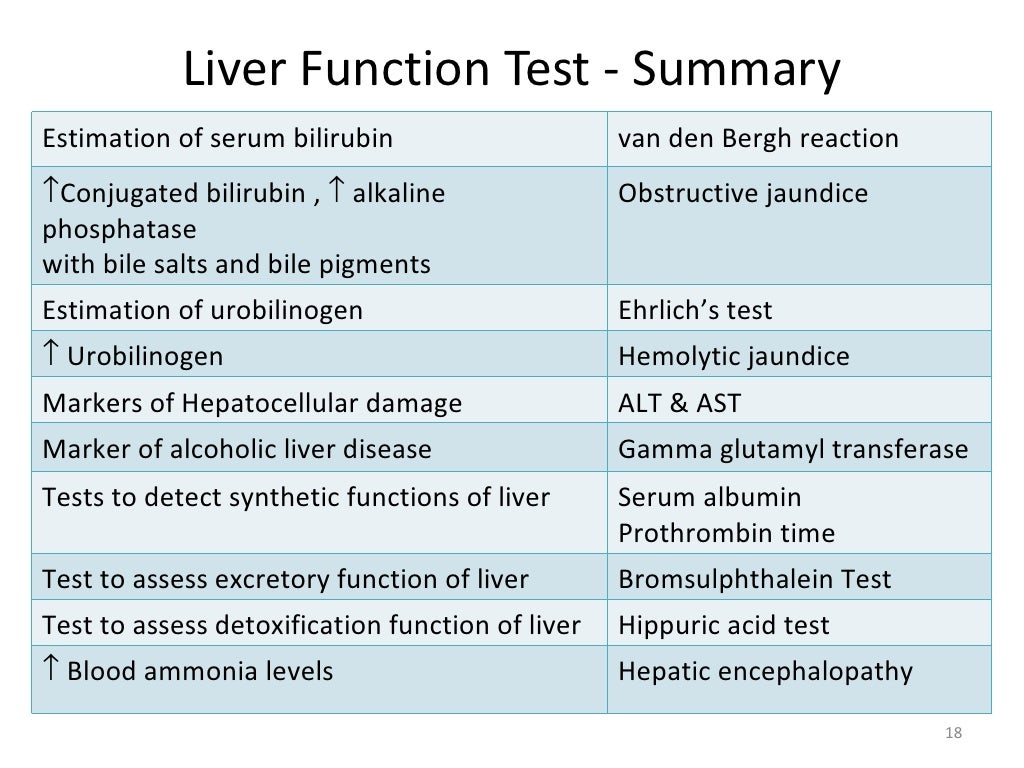 Your blood samples will then be sent to a laboratory for analysis.
Your blood samples will then be sent to a laboratory for analysis.
Once your test results are in, your doctor will review them and make an appointment so you can discuss the results. If liver function test results show elevated liver enzymes, further testing may be needed.
Peter was very easy to talk to and made it clear that he understood my concerns. He offered the expected solution. He was very efficient.
Read all reviews
Stomach problems are never pleasant, but the staff at your office from top to bottom were very helpful. They take a personal interest in your condition and imagine it; THEY RESPOND TO PHONE MESSAGES IMMEDIATELY. I’m not quite better yet, but I’m fully confident that they’ll get me there. I highly recommend this practice.
Read all reviews
Your South Denver GI team
At South Denver GI, our team of physicians and best practice providers has the experience to provide you with superior care. If you would like to learn more about elevated liver function tests or need to make an appointment with our office, contact us today!
View All Our Suppliers
Contact Us Today
For quality, professional and prompt assistance, contact South Denver GI today.

 This will help your veins become more visible. They’ll then use a needle to draw samples of blood from your arm.
This will help your veins become more visible. They’ll then use a needle to draw samples of blood from your arm.